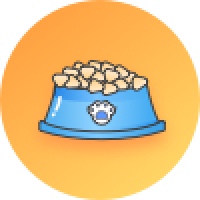C1108 Glass Cockpit
11132 factory.
Winter had already arrived. The winter in the entire Heavenly Abode Country was cold and humid. At this moment, in the 1132 factories, it was still a scene of intense production.
"Our current production line is very full." As he walked over, Elder Tu introduced to everyone, "Our J-7 Combat Jet is currently in the process of production, to meet the needs of domestic and international users."
Although the J-7 Combat Jet was in the J-10, the front of the J-11 was already considered a low-class aircraft. However, the price was low after all. Therefore, under the situation where the huge J-6 Fighter in the country was continuously retired, this kind of low-cost fighter aircraft was still needed to fill in the vacancies. After all, the cost of creating the J-11 Fighter was quite high. It was impossible to change clothes one by one.
In addition to domestic use, a considerable portion of it was also exported to Coconut Jujube Country, becoming one of the main fighter planes that they seized the air rights.
Gerhard and the others followed behind and looked at the assembly line of fighter aircraft. They felt that it was almost the same as their own workshop. Their management was also in good order. There were records of the installation of every small screw.
"Let's go. Everyone follow me. The factory on the other side is in the process of producing J-14 Fighter." Elder Tu led everyone and continued to the factory next door.
The J-7 fighter aircraft still belonged to many different types of Second-generation Aircraft. When they arrived at the J-14, it would be the scene of a third-generation aircraft.
The side wings, the body of the wings, the horn and triangular wings, the two ribs, and the bulges at the entrance looked even more sci-fi.
"This is our J-14 Fighter. There are a lot of orders for it now. Our factory is carrying out three shifts of work, and the production line is not resting. We are continuously producing this type of fighter aircraft."
There were already many exports. The production of the fighter aircraft was also very intense here. Due to the problem of the engine, the machines produced here were all Mechs. After entering the exporting country, they could be stuffed into the engine and fly.
After the last meeting, the Hans reported to their country. When they came to see Qin Guan again, they asked him to take a look at the production line. Regarding the other party's request, Qin Guan naturally agreed without hesitation. He brought them to the 1132 factory and looked at the assembly line of the fighter aircraft.
Qin Guan also felt a sense of accomplishment. In the future, the Owlet Dragon was difficult to produce. In the end, it was still built. Unfortunately, after it was built, it was already too late. The surrounding threat had already reached the fourth generation. In the end, the number of Owlet Dragon sold was not much.
But it was different now. Most of the countries in the world were still mainly made up of Second-generation Aircraft. The market for this plane was too large, but unfortunately, the engine was limited. When the problem of the engine was solved in the future, the sales would be even wider.
Hans attached a lot of importance to this model of aircraft. He kept staring at it on the production line.
The overall structure of this fighter aircraft was completely different from the J-7. It was completely a third-generation aircraft's design concept. For example, the rear body.
The rear body of the J-7 was directly torn down. Only then could the engine be removed. It was quite cumbersome. As for this J-14 Fighter, it was used in a backward style. The engine was directly stuffed in from the back. Under the conditions of a field battle, he would be able to complete the installation of the engine within ten minutes.
"Can we go in and take a look?" Seeing that a fighter jet was almost finished assembling, Gerhard couldn't help but want to go up and take a look.
"Yes, this plane is the testing machine for our new aviation power plant. It might be different from other planes." Elder Tu said from the side.
New test aircraft?
With this question in mind, Gerhard walked up. When he stepped on the ladder and climbed up, he was shocked when he saw the layout of the cabin. "There are actually three monitors inside?"
This was the first time he saw a modern fighter's cockpit. It was the same as the futuristic cockpit. The densely packed mechanical instruments on the panel were gone. There were two screens on the left and right sides of the panel. There was another screen in the middle below. There were three screens in total, occupying the main monitor area.
It looked like it was too sci-fi. How was that possible? The development of the Han people in electronic technology was too rapid, right?
When the plane first appeared, there were no instruments. With the development of the plane, various instruments were slowly developed. For example, a geographic instrument, knowing the condition of the plane, such as a compass, there was also a large pile of instruments for the navigation of the aircraft, as well as the engine and so on.
The more the plane developed, the more instruments there were. Later, in the fighter jet's cockpit, the instruments in front of the pilot were densely packed.
Therefore, the pilot had to lower his head to look at the instruments in order to find the data he needed. This had a negative impact on the pilot's tactical control and lowered the safety of the low-altitude flight.
In order to make the pilots more focused on flying and fighting, Y Country was the earliest reformation. It created a flat-view monitor and used the development of electronic computers. The CRT monitor displayed all kinds of data that were needed to be projected onto the Head-up Display in front.
This greatly increased the reliability of flying and became a standard for western fighter jets in the 1970s. Especially after integrating the Cannons hotline, it satisfied the pilot's needs.
However, the area of its display was too small. It was simply impossible to display a large amount of data. For example, in the mid 1970s, a standard fighter aircraft had more than 100 cabin control devices. Numerous instructions and signals distracted the pilot's attention.
Thus, Y Country began a research on the monitor, trying to make up for the flaws in the plane's structure. They also hoped to combine the flying and combat data to make it easier for them to understand the position chart of the plane. Finally, it formed a complete Glass Cockpit system.
The so-called "Glass Cockpit" was a modern display system that was replaced by most of the traditional instruments.
It corresponded to the old-fashioned electronic devices. This device was made up of many different individual measurements, and each part was responsible for different functions.
The Glass Cockpit no longer used the form of many devices, and only retained some backup or redundant tasks. Most of the screens on the interface were computer screens, and the screens displayed multiple options for the same set of instruments or similar instruments according to the user's needs. All these functions were integrated into the system to reduce the pilot's workload, including flight plans and weapon control. For this, the Glass Cockpit could be called a combat innovation.
Currently, the Glass Cockpit was in research in the west. The first modern Glass Cockpit fighter was the F-18A. This fighter was enlisted around 83 years ago, and the modern fighter was the initiator of a flat glass cockpit.
Who would have thought that at the end of this year 1981, the Han Country export-type J-14 Fighter was already equipped with three large display screens. There were only a few internal instruments left!
pqdm.com
 maobi1金币
maobi1金币 Pumpkin Cat10金币
Pumpkin Cat10金币 Toy50金币
Toy50金币 Yarn88金币
Yarn88金币 Collar100金币
Collar100金币 Toilet Paper200金币
Toilet Paper200金币 Sports Car520金币
Sports Car520金币 Villa1314金币
Villa1314金币

